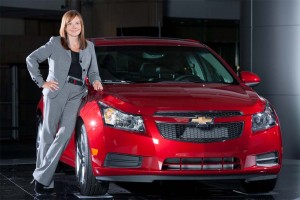General Motors is teaming up with Stanford University’s Center for Automotive Research in Palo Alto, California – the Detroit maker’s latest step in building up its high-tech research and development capabilities in Silicon Valley.
The announcement comes just days after Mercedes-Benz served as the lead automotive partner at the annual Google I/O developers conference and underscores the increasing emphasis the auto industry is placing on digital technology.
GM opened a research center in Palo Alto in 2006. A half dozen other automakers, including Mercedes’ parent Daimler AG, BMW, Volkswagen, Ford Motor Co., Renault/Nissan and Toyota, have established research centers in Silicon Valley, while Tesla Motors is based in Palo Alto and runs an assembly plant in Freemont. Google, which is based in nearby Mountain View, has meanwhile become a force in the auto industry and could play an even bigger role in the future thanks to its push to develop autonomous vehicles.
Mary Barra, GM senior vice president of Global Product Development, says the maker decided to team up with Stanford “to mine the best and brightest ideas and recruit top students studying toward careers in science, technology, engineering and math.”
One of the biggest problems the auto industry – and Detroit makers in particular – has is attracting top high-tech engineers who are often lured to more sexy jobs in the digital industry.
(Mercedes Goes Digital with Help from Google. Click Here for the story.)
“Joining the Center for Automotive Research at Stanford is a natural fit for GM,” Barra said. “In order to create the world’s best vehicles, we make every effort to remain on the cutting edge of automotive development. Our membership in CARS will allow us both to expand and share our knowledge with students, faculty and industry partners as we work together to move the industry forward.”
The Center for Automotive Research at Stanford bills itself as a community of faculty and students from a range of disciplines aimed at discovering, building, and deploying critical ideas and innovations for the next generation of cars and drivers. It provides shared resources for research, teaching, student project teams and new educational initiatives across many research centers, including the law and business schools.
“GM is dedicated to helping develop the next generation of science, technology, engineering and mathematics professionals and advancing the industry,” Barra said. “The Center for Automotive Research at Stanford offers us not only the chance to contribute to the education of future leaders, but also cultivate new and creative vehicle technology solutions.”
Barra is one of several senior GM executives – a list also including Susan Docherty, head of Chevrolet in Europe — to have earned a degree from Stanford, which also is one of GM’s key engineering and business recruitment institutions.


Digital tech is fine. Digital distractions in cars, not.